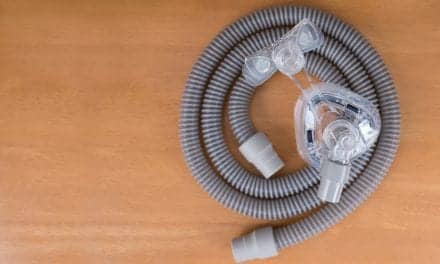The FDA has cleared the newest version of Respiratory Motion Inc’s ExSpiron Minute Ventilation (MV) monitoring system. The device will launch at the Society for Pediatric Anesthesia-American Academy of Pediatrics in Phoenix, March 23-25.
Respiratory failure can occur anywhere in the hospital and early detection can often make the difference between life and death. MV monitoring is the most direct measure of respiratory status, providing the earliest warning of changes in respiratory status. Sufficient time to act is crucial in preventing bad outcomes. Respiratory Motion’s ExSpiron is the first and only continuous Minute Ventilation Monitor that has been cleared for broad use in hospital and ancillary medical settings.
The ExSpiron has previously been used across a variety of medical environments, providing real time, point-of-care data to improve the care and hospital experience of adult patients receiving opioids and/or sedatives and those at increased respiratory risk, such as patients with COPD (emphysema), congestive heart failure, sleep apnea, abnormal response to pain medications, etc. A clinical study reported by Dr. Viviane Nasr and colleagues from Children’s Hospital of Boston in December 2017 in the prominent medical journal Anesthesia and Analgesia, laid the groundwork for FDA clearance of the ExSpiron for use in children one year of age and older.
Respiratory Motion CEO, Dr. Jenny Freeman, previously a practicing pediatric cardiovascular surgeon, noted that “it is particularly rewarding to be able to bring the ExSpiron’s life saving advantages to the vulnerable pediatric population. It is very challenging to manage pain in our small patients and we have been striving to create a device to help optimize both the safety and the comfort of hospitalized children. We are now working to extend the technology to benefit newborns and premature infants. Respiratory Motion is committed to building technology that can be used to improve the care of everyone, everywhere.”
Whereas other technologies focus on reducing “Failure to Rescue” in the hospital, i.e. identifying the patient in time that he can be rescued from death, the ExSpiron provides an earlier identification of changes in respiratory status and thereby the opportunity to “Avoid the Need for Rescue.” This approach provides both an outcome advantage for the patient and a cost advantage for the hospital. The sensitivity of the ExSpiron to report early changes and unlike other respiratory monitoring technologies, the ExSpiron’s extremely low false alarm rate (even with the aggressive motion seen in children), the ExSpiron is positioned to help caregivers in their quest to achieve both patient safety and patient (and family) satisfaction.











Please l want to know the cost of ExSpiron and how to buy it in Egypt